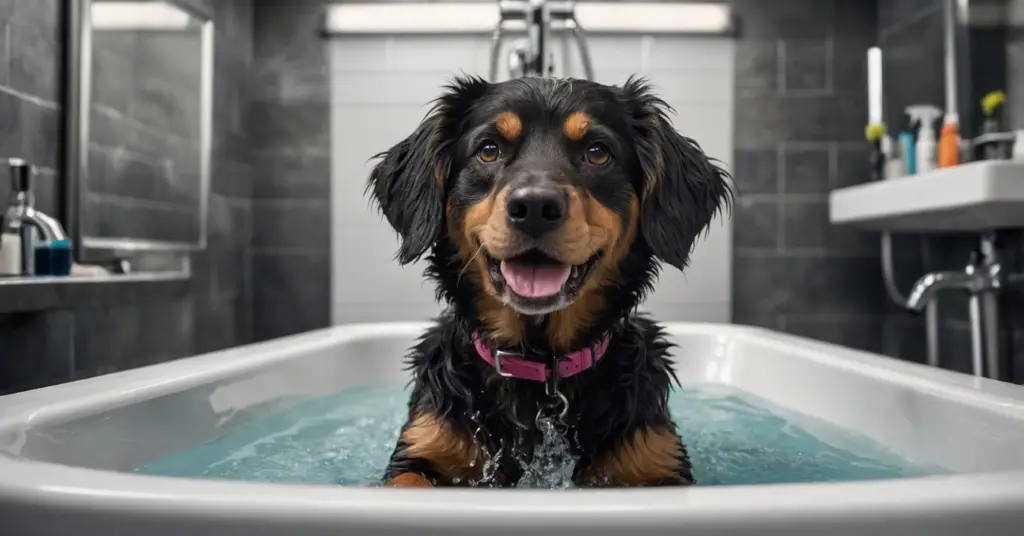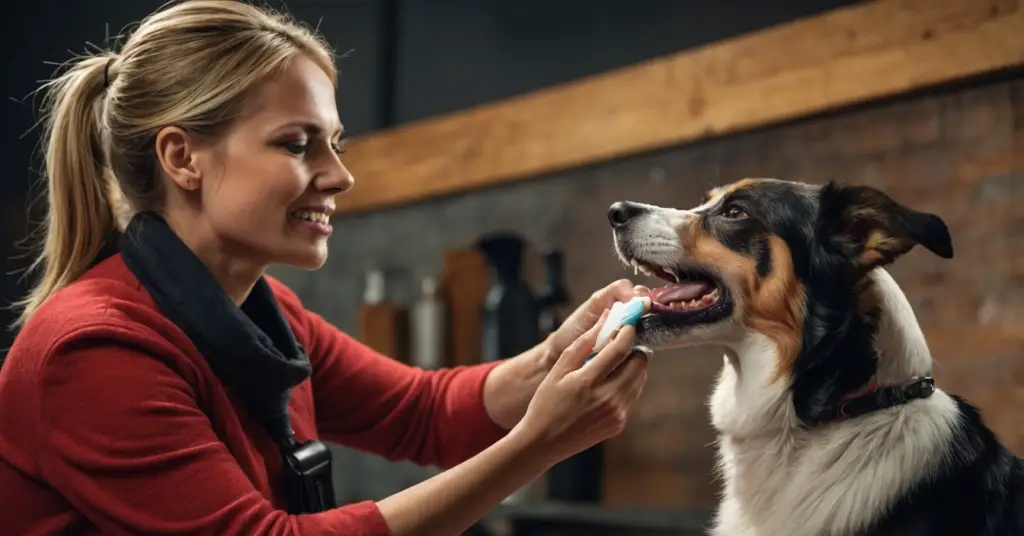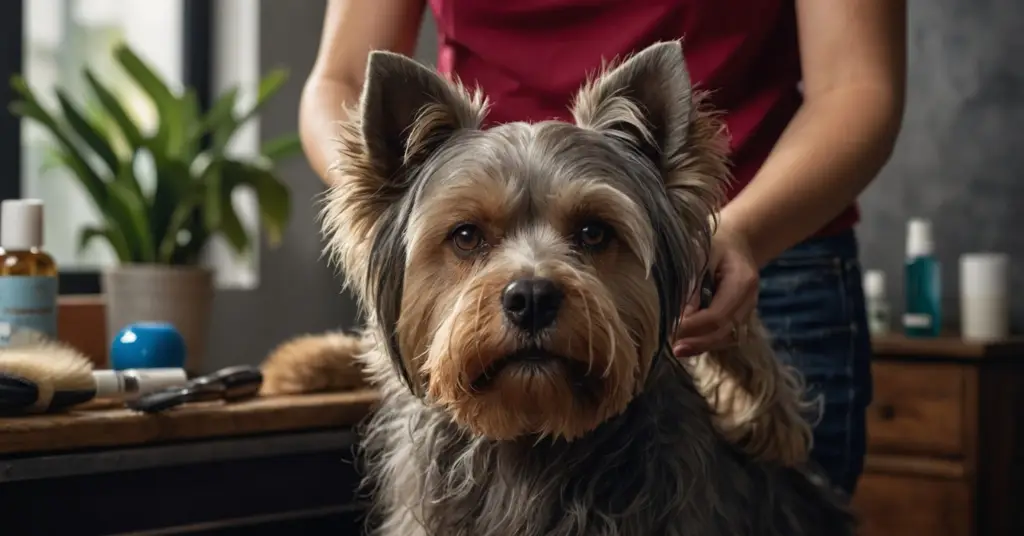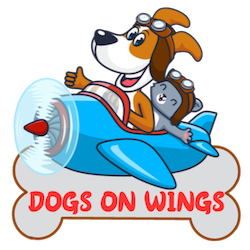Taking care of a pet goes beyond feeding and walking—it’s essential to maintain their hygiene, and home dog grooming can be a great solution. Not only does it save money, but it also creates a special moment with your pet, strengthening the bond between you.
Whether brushing their fur, bathing, or trimming nails, grooming at home allows you to better understand your dog’s needs. The best part? You don’t need to be a professional to learn basic care and turn this task into something simple and enjoyable.
Want to discover how to care for your dog practically and safely? Keep reading to learn how to do home dog grooming efficiently, without complications, and with all the love your pet deserves.
Why Is Dog Grooming Important?
Dog grooming is much more than aesthetics—it’s vital for the health and comfort of your pet. Tangled fur, overgrown nails, or poor hygiene can cause discomfort, pain, and even serious health issues like infections or skin irritations.
Moreover, home dog grooming allows you to perform a thorough inspection of your dog’s body. This moment is ideal for checking for parasites like fleas and ticks or noticing unusual changes, such as lumps, wounds, or irritations.
Another essential aspect is emotional well-being. Grooming is a moment of care and affection that strengthens the bond between you and your dog. When done calmly and gently, it creates a positive experience, making your pet feel loved and safe.
Preparing for Home Dog Grooming

Preparation is a crucial step for efficient and stress-free home dog grooming. Choosing the right environment makes all the difference. Ideally, it should be a calm space without distractions where your dog feels secure.
Enclosed spaces like bathrooms are good options, as they facilitate containment and cleanup after the procedures.
Before you start, gather all the necessary materials. This avoids interruptions, which can make your dog more nervous. Organize everything beforehand and ensure the area is clean and free of dangerous objects.
Preparing your dog is equally important. Start with light brushing to remove loose fur and detangle superficial knots. If your dog is very dirty, wipe off excess dirt with a damp cloth before the bath. This initial step helps make the process more efficient and comfortable.
Essential Items for Home Dog Grooming
Creating a home dog grooming kit is the first step to ensuring proper care. Here are the must-have items and how to use them:
- Brushes and combs: Bristle brushes are great for short-haired dogs, while detangling combs are ideal for long-haired breeds.
- Scissors and clippers: Scissors are excellent for detail work, and clippers speed up cuts for dense fur. Choose quality, preferably quiet equipment.
- Nail clippers: Specific tools for dogs are safe and prevent accidental cuts. Invest in clippers with a guide for greater precision.
- Shampoo and conditioner: Dog-specific products respect their skin’s pH, avoiding dryness or allergic reactions.
- Towels and dryer: Opt for soft towels and dryers with temperature control. Excessive heat can burn your dog’s skin.
Add items like cotton swabs for ear cleaning and dental hygiene tools to keep your pet’s mouth healthy. With this kit, you’ll be ready to provide top-notch grooming.
Step-by-Step Guide for Grooming Your Dog
Organized home dog grooming ensures a faster and smoother process. Follow this step-by-step guide:
- Brushing: Always start by brushing the fur. This step removes dirt, loose hair, and prevents knots from worsening during the bath. Use brushes suitable for your dog’s coat type.
- Bathing: Use warm water and ensure the entire coat is wet before applying shampoo. Gently massage and rinse thoroughly to avoid residue that could irritate the skin.
- Drying: Wrap your dog in a towel to absorb excess water. Use a hairdryer on a warm setting, keeping it at a safe distance to avoid discomfort.
- Trimming and clipping: Trim areas with long or tangled fur. Pay extra attention to sensitive regions, such as around the eyes and paws.
- Nail trimming: Examine the nails under good lighting to identify the quick (the sensitive part). Trim slowly, in small increments, to avoid injury.
Finish with affection, like a treat or a favorite toy, to reinforce the positive experience.
Specific Care for Different Coat Types

Dogs have different coat types, and each requires specific care. Here are some tips for the main types:
- Short fur: These dogs are easier to care for but still need weekly brushing to remove dead hair and stimulate circulation. Baths can be done every 4-6 weeks.
- Long fur: Requires daily brushing to prevent knots and dirt buildup. Biweekly baths help keep the coat clean and shiny.
- Double coats: Breeds like Huskies or Akitas have undercoats that need to be removed during shedding. Frequent brushing prevents excess fur in the house.
- Hairless: Hairless dogs, like the Xoloitzcuintli, require skin care, including hydration and sunscreen.
Understanding your pet’s coat characteristics is crucial for setting an ideal routine, simplifying home dog grooming.
Tips for Keeping Your Dog Calm During Grooming
Keeping your pet calm is essential when it comes to home dog grooming. Here are some strategies to make the experience more positive for your dog:
- Offer treats and rewards: Treats help create positive associations with grooming. Give small rewards throughout the process.
- Stick to a consistent routine: Dogs enjoy predictability. Groom on the same days and times whenever possible.
- Use music or calming sounds: Quiet environments help reduce anxiety. Relaxing sounds can soothe nervous dogs.
Over time, these practices create a more pleasant atmosphere, making grooming less stressful for your pet.
Common Mistakes in Grooming and How to Avoid Them
Making mistakes during home dog grooming is normal, but avoiding them is ideal. Here are the most common ones:
- Cutting your dog’s skin accidentally: Use appropriate tools and keep your hands steady.
- Using water that’s too hot or too cold: Always test the water temperature before bathing.
- Skipping conditioner for long coats: Conditioner helps detangle fur and prevent breakage.
Learning from these situations makes the process increasingly safe and efficient.
Benefits of Regular Grooming for Your Dog’s Health

The benefits of home dog grooming go beyond appearance. Dogs that receive regular care are healthier and happier. Brushing, for example, improves circulation and keeps coats in excellent condition.
Additionally, early detection of health problems is a significant advantage. A simple lump or irritation can be treated quickly when identified during grooming. This prevents complications and reduces veterinary costs in the long run.
Clean and well-groomed dogs also pose less risk of bringing dirt or parasites into your home, protecting the entire family.
When to Seek Professional Help
Some situations require professional attention. Dogs with very dense coats, aggressive temperaments, or specific health conditions may benefit from regular visits to a professional groomer.
Professionals also have access to tools and techniques that ensure perfect results, such as breed-specific cuts or specialized treatments. Don’t hesitate to seek help when needed—your pet’s well-being always comes first.
Home Dog Grooming: Final Considerations
Taking care of your dog doesn’t have to be complicated. With the right tools and a little patience, home dog grooming can become a special moment between you and your pet. Besides ensuring they’re clean and healthy, you strengthen your bond and better understand their needs.
Remember to tailor care to your dog’s coat type and behavior, always respecting their time and limits. With practice and consistency, this routine becomes easier and even fun, benefiting both your pet’s well-being and yours.
Whether it’s maintaining soft fur, trimmed nails, or preventing health issues, home dog grooming is an incredible way to show love and care. Now it’s time to roll up your sleeves and enjoy these unique moments with your best friend!
